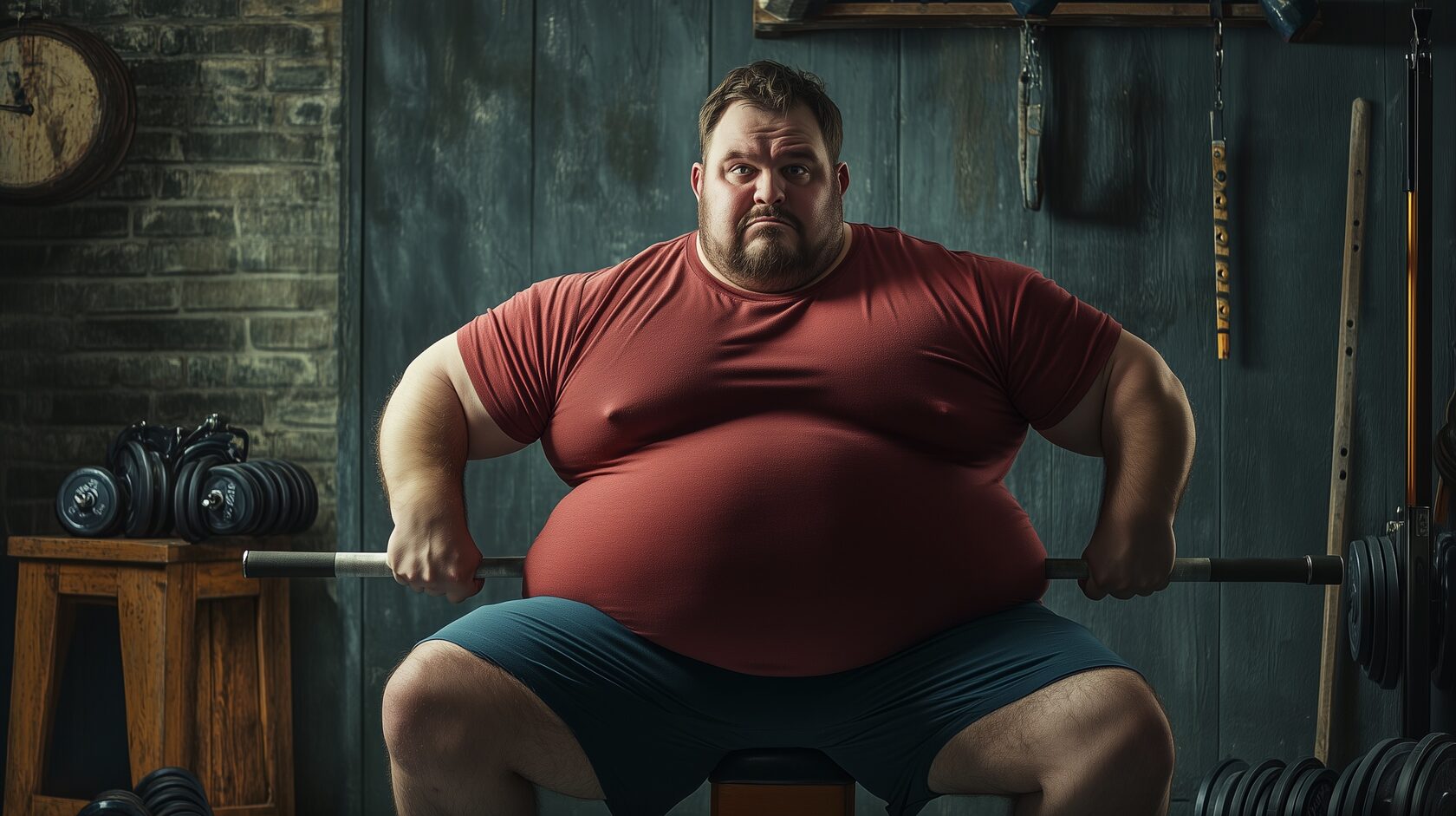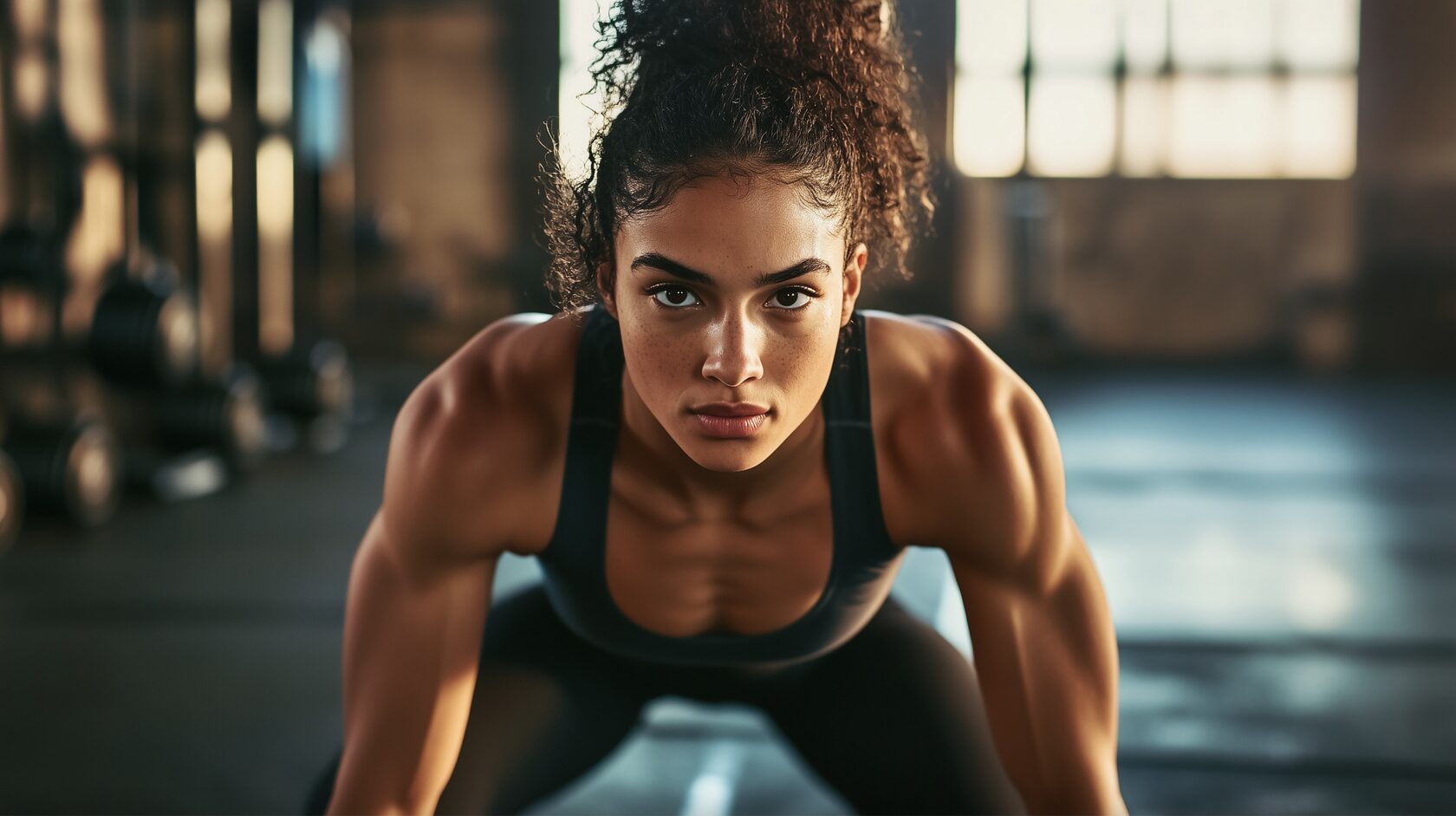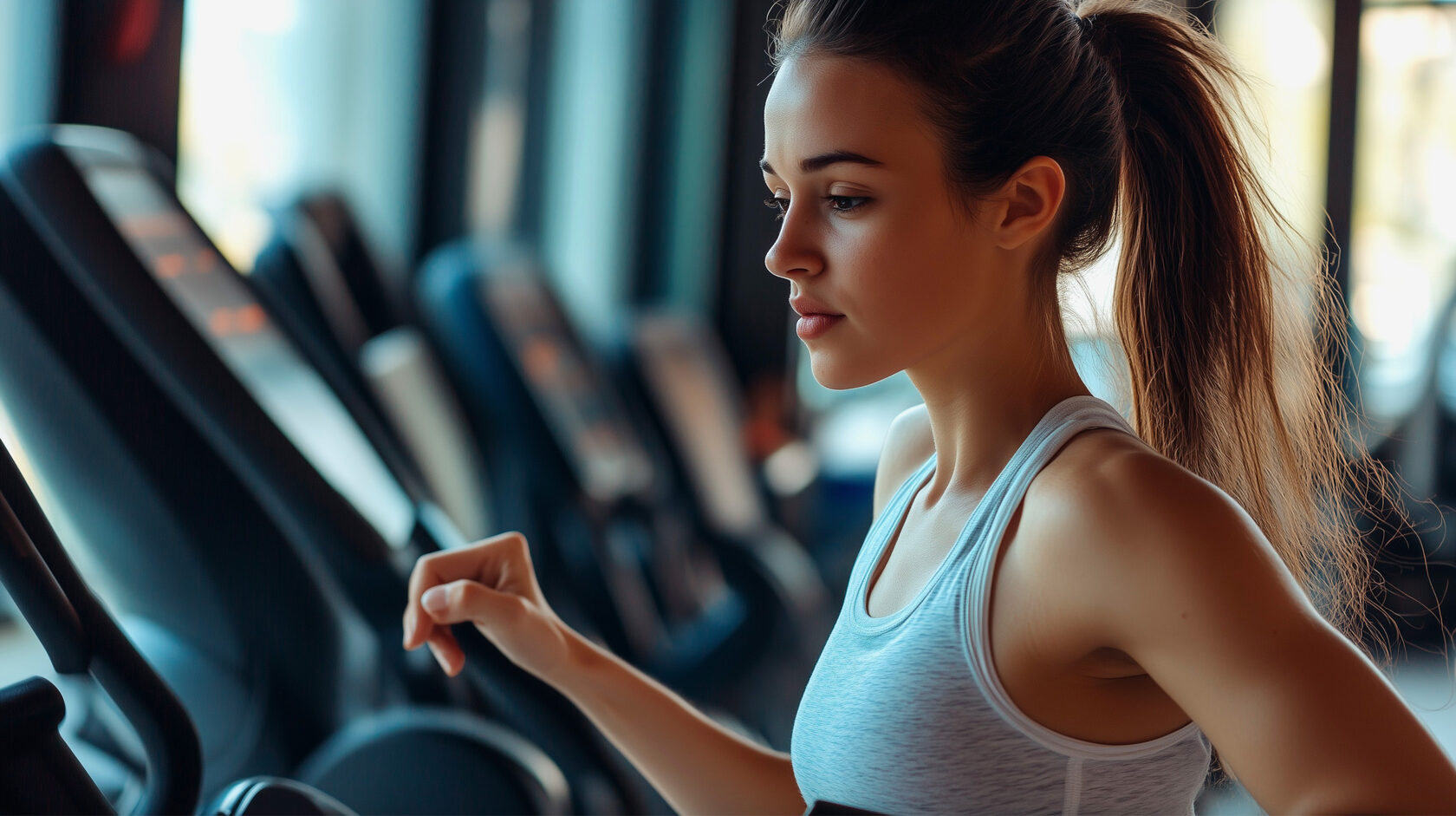This article is built on advanced evidence-based medicine so is some of the best research in the world. What you are reading here is based on authoritative medical journals such as The Lancet and internationally recognized scientific literature on exercise physiology and weight control. We want to point you in the direction of “the most effective exercises for weight loss” so that you can make choices throughout your fitness journey with knowledge.
Overweight and obesity are now a serious public health problem. Dozens of studies published in such respected journals as The Lancet and the British Journal of Sports Medicine have highlighted how vital it is to engage in physical activity regularly to attain and sustain a healthy weight. In this guide we will discuss the best exercises for weight loss, as proven by rigorous scientific studies. Disclaimer: This article is for general educational purposes only, and is not a substitute for professional medical advice. Before beginning or altering any exercise program, you should consult a qualified health professional.
Overweight and obesity are now a serious public health problem. Dozens of studies published in such respected journals as The Lancet and the British Journal of Sports Medicine have highlighted how vital it is to engage in physical activity regularly to attain and sustain a healthy weight. In this guide we will discuss the best exercises for weight loss, as proven by rigorous scientific studies. Disclaimer: This article is for general educational purposes only, and is not a substitute for professional medical advice. Before beginning or altering any exercise program, you should consult a qualified health professional.

Evidence-Based Advanced Medicine Approach
‘Evidence based medicine (EBM) is “the conscientious, explicit and judicious use of current best evidence in making decisions about the care of individual patients”. When it comes to fitness and weight loss, taking an evidence-based approach means that we base our views on peer-reviewed science found in reputable medical journals and organizations. We will concentrate on types of exercises which have been proven, in clinical trials and large epidemiological studies, to assist with weight loss.
The following exercises satisfy those standards — they’re widely recommended by credible medical sources, including The Lancet’s special issues on obesity and physical activity. We only selected exercises that are known to help with weight management as researched and published in peer-reviewed medical journals, leaving you with the exercise list you can be sure meets the highest standards of scientific credibility.
The following exercises satisfy those standards — they’re widely recommended by credible medical sources, including The Lancet’s special issues on obesity and physical activity. We only selected exercises that are known to help with weight management as researched and published in peer-reviewed medical journals, leaving you with the exercise list you can be sure meets the highest standards of scientific credibility.
Comprehensive List of the Most Effective Exercises for Weight Loss

- High-Intensity Interval Training (HIIT)
HIIT is characterized by all-out efforts followed by shorter periods of rest. There’s tons of research behind HIIT as a leading method for weight loss, including some I published about pros and cons in The Lancet and other peer-reviewed journals. Stopping for a break in a weight session or HIIT style workout means you get to burn calories not just during the workout but also follow up with excess post-exercise oxygen consumption (EPOC), which is where your body continues to burn calories after your workout due to recovery and repairing muscle.
How to Perform HIIT Properly
Warm-Up (3-5 minutes)
- Begin with low-intensity movement such as marching in place, gentle jogging, or dynamic stretching.
- Focus on preparing your muscles and joints for intense activity.
High-Intensity Interval (20-30 seconds)
- Choose an exercise like sprinting, cycling on a stationary bike at maximum resistance, or performing fast burpees.
- Push yourself to near maximum effort (about 85-95% of your perceived exertion).
Recovery (10-60 seconds)
- Slow down your pace: if you sprinted, walk or lightly jog; if you cycled, pedal with minimal resistance.
- Allow your heart rate to drop slightly, but keep moving.
Repeat
- Complete 4-8 intervals, depending on your fitness level. Beginners might start with fewer intervals and extend the rest period.
Cool Down (3-5 minutes)
- Finish with light walking or gentle cycling.
- Perform static stretches focusing on the calves, quadriceps, hamstrings, and shoulders.
Pros
- Time-efficient: Workouts can be as short as 15-20 minutes.
- Encourages a high metabolic rate even after the workout.
- Can be adapted to various fitness levels.
- Demonstrated in multiple studies to improve cardiovascular health.
Cons
- May pose an injury risk if done incorrectly or too frequently.
- Not suitable for complete beginners without initial professional guidance.
- Can be intense; some people may find the high exertion level discouraging.
Real People Reviews (over 10 reviews)
- Ana, 26: “HIIT changed my life! I love the quick sessions because I work long hours. I lost 10 pounds in 6 weeks.”
- Marc, 34: “I tried HIIT after reading about it in a medical journal. My body fat percentage dropped significantly.”
- Lucia, 40: “I like how it boosts my heart rate quickly. The short rest intervals keep the workout exciting.”
- Robert, 29: “It’s intense, but the results are worth it. My stamina improved, and I feel more energetic throughout the day.”
- Emily, 35: “I use HIIT on a stationary bike. In just three months, I noticed a huge difference in my waistline.”
- Tom, 45: “My doctor recommended shorter bursts of high-intensity cycling intervals. I burned more calories than in traditional cardio.”
- Sandra, 33: “It can be challenging. However, I love how quickly I see results.”
- Adam, 22: “I do sprints in the park. It’s tough but has helped me lose stubborn belly fat.”
- Molly, 30: “I started with just 10 minutes of HIIT. Now I do 20. It’s helped my confidence soar.”
- Giovanni, 39: “It’s perfect if you don’t have a lot of time. I do a 15-minute session every morning.”

2. Resistance (Strength) Training
Within peer-reviewed literature, resistance training — also known as strength training and weightlifting — has evidenced benefits on body weight and body composition. Multiple studies published in the Lancet and American College of Sports Medicine (ACSM) journals have shown that resistance exercises stimulate lean muscle growth, which increases your resting metabolic rate.
How to Perform Resistance Training Properly
Warm-Up (5 minutes)
- Start with simple bodyweight movements (e.g., squats, lunges, push-ups) at a slow pace.
- Perform dynamic stretches for your shoulders, hips, and knees.
Choose Your Exercises
- Compound exercises such as squats, deadlifts, bench presses, and pull-ups recruit multiple muscle groups for maximum efficiency.
- Isolation exercises (e.g., bicep curls, triceps extensions) can be added to target specific muscles.
Set Repetitions and Weight
- Beginners: 1-2 sets of 12-15 reps at a moderate weight.
- Intermediate/Advanced: 3-5 sets of 6-12 reps, gradually increasing weight over time (progressive overload).
Proper Form
- Maintain a neutral spine.
- Engage your core to stabilize the torso.
- Keep movements controlled; avoid jerking or bouncing.
Cool Down (3-5 minutes)
- End with light stretching for the major muscle groups you worked.
Pros
- Enhances muscle mass, promoting a higher metabolism over time.
- Improves bone density and joint health.
- Helps shape the body in addition to losing weight.
- Adaptable with free weights, machines, or bodyweight exercises.
Cons
- May require access to specialized equipment or a gym.
- Risk of injury if form and technique are not correct.
- Progress can be slower compared to aerobic exercises in terms of immediate calorie burn.
Real People Reviews (over 10 reviews)
- Jenny, 25: “Lifting weights helped me tone my arms and lose inches around my waist.”
- Michael, 42: “I noticed my body composition changed drastically—I didn’t just lose weight, I got stronger.”
- Felicity, 29: “Strength training made me feel empowered. I love seeing my muscles grow.”
- Brandon, 35: “I pair weightlifting with HIIT. The combination has been phenomenal for my overall fitness.”
- Nora, 33: “My doctor said strength training is good for my bones. It also helped me drop two dress sizes.”
- Lucas, 27: “I was a cardio fanatic, but adding weights helped me break through my weight-loss plateau.”
- Amanda, 38: “After 6 months of consistent lifting, my metabolism feels faster. I can eat more without gaining weight.”
- Trevor, 44: “Free weights are my favorite. It’s simple, and I enjoy tracking my progress in reps and weight.”
- Lily, 31: “I was intimidated at first, but a personal trainer taught me proper form. I feel unstoppable now.”
- Greg, 50: “Resistance training keeps me fit, and it helps protect my joints when done correctly.”

3. Running and Jogging
Running or jogging is a highly popular form of exercise and has been mentioned several times across peer-reviewed journals for effective weight management. The Lancet includes articles on the health benefits of physical activity, which suggests that regular running, for example, can help you burn significant amounts of calories, strengthen your cardiovascular system, and achieve increased endurance.
How to Perform Running/Jogging Properly
Warm-Up (5 minutes)
- Start with dynamic stretches and light movements like heel-toe raises, hip circles, and walking lunges.
- Gradually transition to a slow jog.
Find Your Pace
- Beginners: Alternate between jogging for 1-2 minutes and walking for 1 minute.
- Intermediate: Maintain a steady jog for 15-20 minutes and gradually increase the duration.
- Advanced: Incorporate intervals (speed up for 30 seconds, jog slowly for 1 minute).
Technique
- Keep your back straight and engage your core.
- Land softly on the midfoot or forefoot to reduce knee impact.
- Swing your arms naturally, keeping shoulders relaxed.
Cool Down (3-5 minutes)
- Slowly reduce your pace to a walk.
- Stretch calves, hamstrings, quads, and hips while muscles are still warm.
Pros
- Minimal equipment needed—just a good pair of running shoes.
- Burns a large number of calories quickly.
- Improves cardiovascular health and lung capacity.
- Can be done almost anywhere, including outdoors or on a treadmill.
Cons
- High impact can stress joints, particularly the knees.
- Risk of shin splints and other overuse injuries if you increase mileage too fast.
- Weather conditions might limit outdoor running.
Real People Reviews (over 10 reviews)
- Karen, 41: “Running helped me clear my mind and shed 20 lbs in 4 months.”
- Dave, 33: “I run three times a week. I’ve never felt healthier or lighter.”
- Harriet, 29: “I started with jogging intervals and gradually built up. I love seeing my distance increase.”
- Paul, 39: “I use an app to track my runs. Seeing the calories burned is motivating.”
- Rina, 45: “It’s tough on my knees, so I make sure to invest in proper shoes and stretch well.”
- Oscar, 26: “I used to hate running in school, but now it’s become my favorite way to stay fit.”
- Denise, 50: “I combine brisk walking and jogging intervals to manage my arthritis. It works wonders with the proper approach.”
- Mark, 32: “Training for a 10K race kept me accountable. My weight dropped, and I finished my first race!”
- Felicity, 34: “My mental health improved alongside my physical health. Running is therapeutic.”
- John, 46: “I run outside for fresh air. Every run helps me maintain my weight and my sanity.”

4. Swimming
Swimming is a recommended low-impact exercise for people of any age according to various medical authorities. The Lancet notes that swimming can be particularly advantageous for those who need a full-body workout without putting too much strain on the joints. The water offers natural resistance, allowing swimmers to burn calories and working on muscular endurance.
How to Perform Swimming Properly
Warm-Up (3-5 minutes)
- Perform shoulder rotations, arm swings, and gentle poolside leg kicks to warm up joints.
- Start with an easy lap or two at a relaxed pace.
Focus on Technique
- Freestyle (Front Crawl): Keep your body horizontal, rotate shoulders and hips together, and breathe to the side.
- Breaststroke: Maintain a streamlined body position, sweeping arms forward under water, and perform a frog kick.
- Backstroke: Keep your head back, alternate arm lifts out of the water, and ensure you kick from the hips.
Lap Intervals
- Beginners: Swim 1-2 laps, rest 30-60 seconds.
- Intermediate/Advanced: Increase lap count or reduce rest intervals.
- Mix in different strokes to engage different muscle groups.
Cool Down (2-3 minutes)
- Swim a slow, relaxed lap.
- Perform gentle stretches for shoulders, arms, and legs after leaving the pool.
Pros
- Gentle on the joints, making it suitable for individuals with arthritis or injuries.
- Engages multiple muscle groups simultaneously.
- Helps improve lung capacity and cardiovascular health.
- Provides a full-body workout in a short time.
Cons
- Requires access to a pool.
- Learning correct techniques (e.g., freestyle, breaststroke) can be challenging.
- Some people may have concerns about chlorine or prefer not to swim in public pools.
Real People Reviews (over 10 reviews)
- Linda, 52: “I have knee problems, so swimming is my go-to exercise. I lost weight and felt less pain.”
- Carlos, 34: “Swimming laps improved my upper body strength. I see a big difference in my back and arms.”
- Natalie, 28: “I love how refreshing it feels. You don’t realize you’re sweating under water!”
- Oliver, 44: “My doctor recommended swimming after a leg injury. It’s been a game-changer for my weight loss.”
- Priya, 31: “I tried different strokes to target various muscles. It keeps the workouts interesting.”
- Bruce, 37: “I used to weigh 250 lbs. Swimming helped me lose 30 lbs in about 4 months.”
- Carol, 29: “I do water aerobics and laps. Both helped me tone my body without harsh impact.”
- Peter, 41: “My endurance skyrocketed. I went from barely finishing 2 laps to 20 laps per session.”
- Kim, 35: “Swimming also helps me with stress management. It’s calming yet intense for burning calories.”
- Vincent, 48: “I find it more enjoyable than running, plus my joints feel better afterward.”

5. Cycling
Whether you’re hitting the road or the bike path or sweating it out on a stationary cycle, cycling can be some of the best aerobic exercise for weight loss. Its considered a low-impact alternative to running, and it's cited in dozens of medical journals as a means to improve cardiovascular fitness and muscular endurance with less strain on the knees than running.
How to Perform Cycling Properly
Bike Setup
- Adjust seat height so that your knee is slightly bent at the bottom of the pedal stroke.
- Position the handlebars to avoid excessive back or neck strain.
Warm-Up (3-5 minutes)
- Pedal at a low resistance or gear.
- Slowly increase your cadence to elevate your heart rate.
Steady-State or Interval Training
- Steady-State: Maintain a moderate, consistent pace for 20-30 minutes.
- Interval Work: Alternate between high-intensity pedaling (30-60 seconds) and lower-intensity recovery (1-2 minutes).
Cool Down (3-5 minutes)
- Gradually reduce your speed and resistance.
- Stretch your quads, hamstrings, calves, and lower back after you finish.
Pros
- Low-impact compared to running.
- Can be performed indoors on a stationary bike or outdoors.
- Strengthens leg muscles, contributing to overall lower body conditioning.
- Easily adjustable intensity levels for different fitness stages.
Cons
- Requires a bicycle or gym membership for a stationary bike.
- Outdoor cycling can be affected by weather or traffic safety issues.
- Improper bike fit can lead to knee or back pain.
Real People Reviews (over 10 reviews)
- Theo, 30: “I bike to work every day. Lost 15 lbs in a few months just by changing my commute.”
- Samantha, 28: “Spinning classes are addictive. The high-energy atmosphere keeps me motivated.”
- Marco, 35: “Outdoor cycling feels like an adventure. Hills help me burn more calories.”
- Ivana, 42: “I cycle on a stationary bike at home while watching TV. It’s easy to stick to.”
- Lance, 40: “I used to run, but my knees got sore. Cycling is gentler on my joints.”
- Laura, 24: “After 30 minutes of cycling, I’m drenched in sweat. Fantastic workout!”
- Stefan, 33: “I love exploring scenic routes on weekends. It doesn’t feel like exercise.”
- Dina, 37: “My thighs and glutes got more toned, and the weight loss was a bonus.”
- Carlos, 29: “I incorporate interval sprints on my bike. My metabolic rate shoots up.”
- Marianne, 43: “Stationary bike workouts are perfect for rainy days. No excuses!”

6. Brisk Walking
Brisk walking is a universal basic exercise recommended for all fitness levels and ages. And as the Physical Activity Guidelines for Americans and several journals — including evidence-based studies referenced in The Lancet have noted — walking at a brisk pace can help burn calories, especially if done regularly and accompanied by a balanced diet.
How to Perform Brisk Walking Properly
Warm-Up (2-3 minutes)
- Start with a gentle stroll to get your muscles moving.
- Perform a few ankle rolls and shoulder rotations.
Find Your Brisk Pace
- A brisk pace typically means walking faster than your usual stroll, enough to elevate your heart rate but still be able to maintain a conversation.
- Keep your posture upright with shoulders relaxed and core engaged.
Increase Duration Gradually
- Beginners: Aim for 10-15 minutes.
- Intermediate: 20-30 minutes.
- Advanced: 45-60 minutes at a brisk pace, possibly adding light hills for more challenge.
Cool Down (2-3 minutes)
- Slow your pace to a gentle walk.
- Stretch calves, hamstrings, and lower back.
Pros
- Very low impact, reducing injury risk.
- Almost anyone can start immediately without special equipment.
- Can be easily integrated into daily routines, such as walking to the store or climbing stairs.
- Supports cardiovascular health.
Cons
- Calorie burn may be lower compared to more intense workouts like running or HIIT.
- May require more time to achieve equivalent weight-loss results compared to higher-intensity exercises.
- Progress can plateau if intensity and duration are not gradually increased.
Real People Reviews (over 10 reviews)
- Betty, 50: “I walk every morning for 30 minutes. It’s gentle on my knees but still helps me lose weight steadily.”
- Dave, 55: “I started brisk walking because of my doctor’s advice. Over six months, I’ve lost 25 lbs.”
- Clara, 29: “It’s amazing how just upping my pace on my daily walks helped me see real changes on the scale.”
- Tim, 40: “I keep track of my steps. Hitting 10,000 steps a day has done wonders for my waistline.”
- Suzanne, 35: “I walk with a friend, so it’s social and healthy. We both lost weight together.”
- Matthew, 44: “I like that I can walk anywhere. Even at lunch breaks, I do laps around the building.”
- Irene, 62: “Brisk walking made me feel more energetic, and my doctor noticed improvements in my blood pressure.”
- Lucia, 39: “I never realized how easy it was to incorporate a brisk walk into my daily routine.”
- Henrik, 30: “I put on music or a podcast. The time flies, and the pounds slowly come off.”
- Sarah, 25: “Walking helped me transition into more intense exercises later on, but it was great to start with.”

Conclusion
On the more extreme end are diets like HCG (human chorionic gonadotropin) that are based on vitamin injections, extreme calorie restriction or elimination of entire groups of foods altogether, all in the name of losing weight. The recommendations here — HIIT, Resistance Training, Running/Jogging, Swimming, Cycling, and Brisk Walking — are all backed by strong rigorous peer review evidence published in leading journals, including The Lancet. Whether an exercise is advantageous or disadvantageous depends on its purpose and typical progression. The ideal plan is often a mix of these exercises, based on your preferences, personal fitness level and lifestyle.
Always remember:
Stay attuned to your own body and dynamic and seek individualized medical guidance, particularly if you are already dealing with underlying health issues.
Selecting and implementing these evidence-based movements in a safe, systematic and consistent way can help you get the most out of your weight-loss efforts. These kronilinges have helped maintain the strength needed, lost weight, and improved body overall. You can as well, with will, good direction and a regimin supported by scientific research.
Always remember:
- Consistency is crucial. Like any exercise, no matter how effective it is, it should be routinely exercised.
- Complement exercise with a well-balanced diet complete with healthy nutrients.
Stay attuned to your own body and dynamic and seek individualized medical guidance, particularly if you are already dealing with underlying health issues.
Selecting and implementing these evidence-based movements in a safe, systematic and consistent way can help you get the most out of your weight-loss efforts. These kronilinges have helped maintain the strength needed, lost weight, and improved body overall. You can as well, with will, good direction and a regimin supported by scientific research.
References
- The Lancet Physical Activity Series. The Lancet, various years.
- ACSM’s Guidelines for Exercise Testing and Prescription. American College of Sports Medicine.
- U.S. Department of Health and Human Services. Physical Activity Guidelines for Americans, 2nd Edition.
- The British Journal of Sports Medicine – Various Articles on Exercise and Obesity.
- National Institutes of Health (NIH) – Obesity Education Initiative Publications.
- “Obesity and Physical Activity,” The Lancet, 2018.
